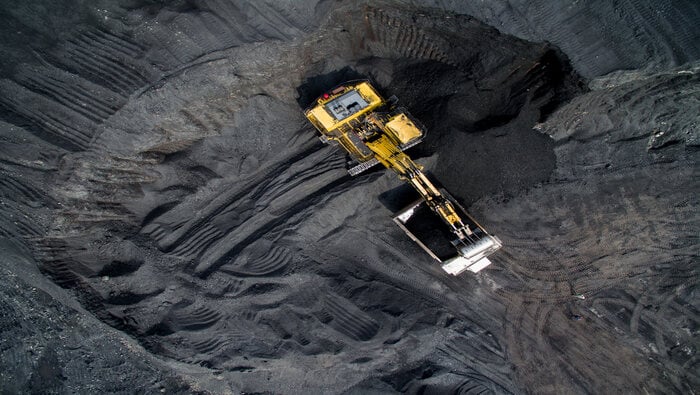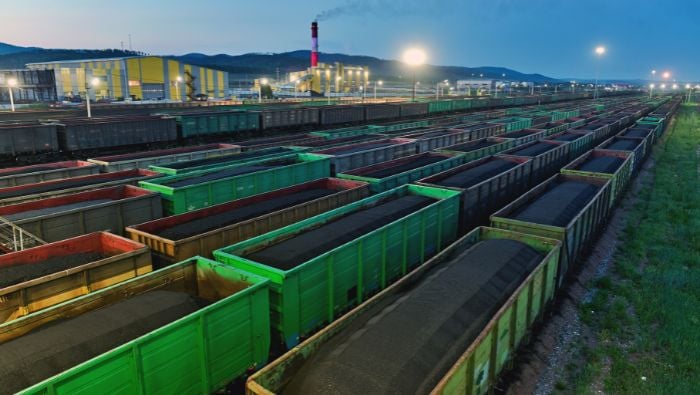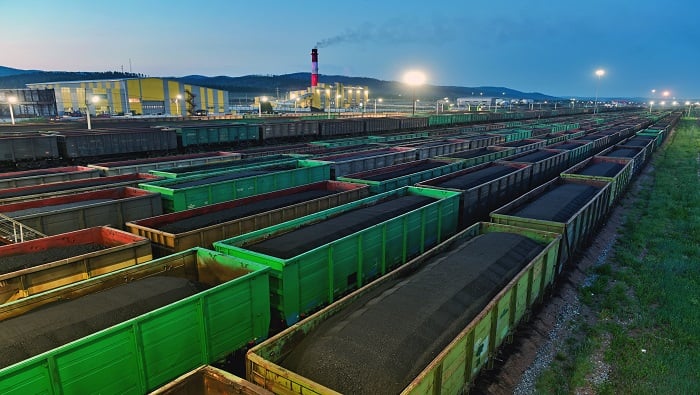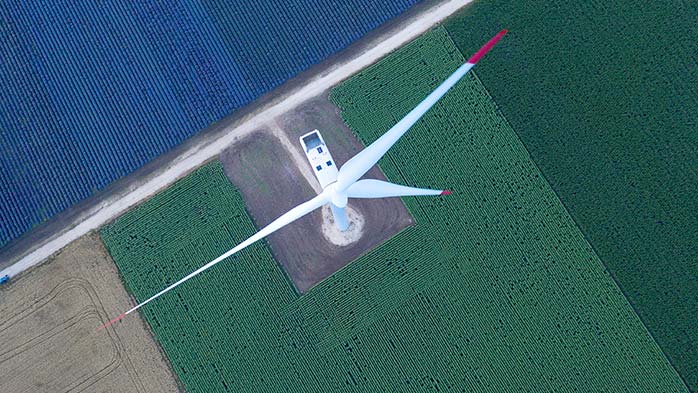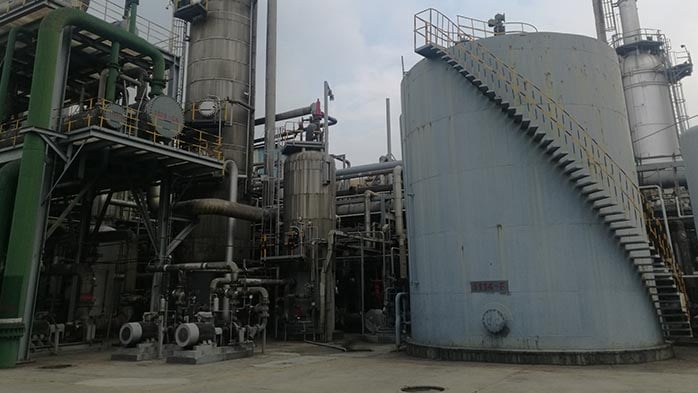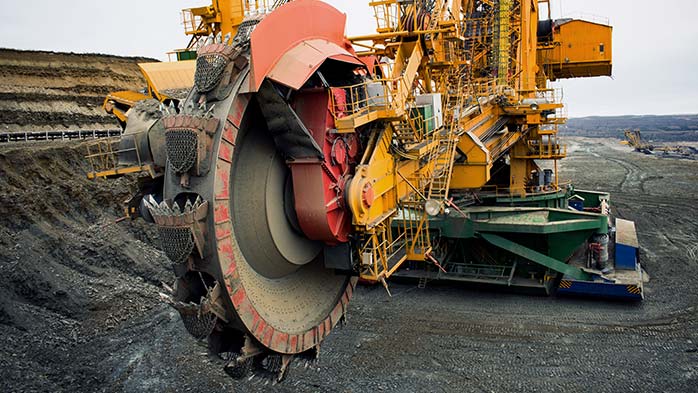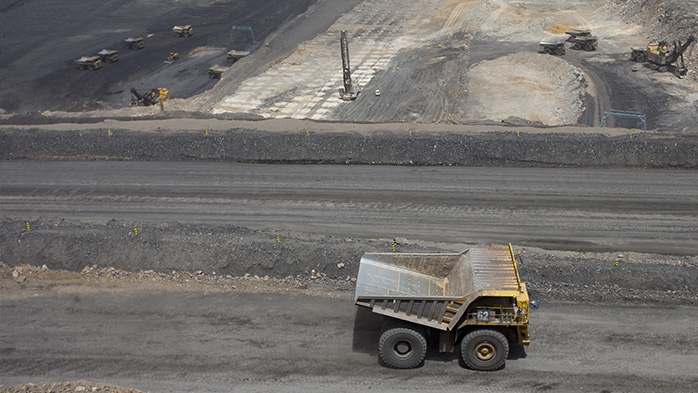The Chinese government has stepped up its efforts to restructure the coal industry in recent months and has introduced a range of new policies to curb oversupply, including restricting mine operating rates to 276 days/year.
As a result of these production controls, Chinese coal output fell sharply y/y in 2016 H1, which has played an important role in boosting imports and lifting seaborne prices in recent months. Given the significant impact on market dynamics during H1, CRU's coal team has visited a number of mines in Shanxi, Shaanxi and Inner Mongolia to understand how operations have been affected by the latest government measures and to assess how the Chinese coal industry is likely to evolve in the medium-term.
Government policy measures have tightened supply
In the last few years, with Chinese coal demand growth stalling and, subsequently, falling, overcapacity in the domestic coal sector has played a significant role in the over-supply of both thermal and metallurgical coal and this has had a deleterious impact on coal sector profitability in the country. Equally, the over-supply in the domestic market has lead to a reduction in imports that has had a significant impact on global market dynamics and global sector profitability. As a result of the troubles in the domestic sector, the Central government's State Council has unveiled a number of new measures over the last few months that are designed to assist coal companies in the short-term, whilst providing for restructuring of the sector in the medium-term. These measures are summarised below:
-
Commencing 01 April, coal mining companies have been required to reduce operating days from the standard rate of 330 days/year to 276 days/year.
-
The closure of 500 Mt/y of coal mine capacity over the next 3-5 years and the consolidation of an additional 500 Mt/y among fewer companies, which should lead to additional closures. The government is targeting the closure of 280 Mt/y of capacity during 2016 alone.
-
There will be no approval of greenfield coal mine construction between 2016-2018.
Coupled with firm demand for coal in 2016 Q2, as both steel production and power consumption exhibited strong y/y growth, the implementation of reduced operating rates at coal mines has had a significant impact on the oversupply, with Chinese coal production falling by 10% y/y in 2016 H1. This has allowed prices to rise and coal companies have moved into profitability - overall, domestic thermal coal and coking coal prices have risen by 30% and 25% respectively since February, while seaborne prices have exhibited comparable gains. Coal companies are enjoying the improved profitability and see that the measures have had a beneficial effect, however, amidst the tightening of supply, there has been an increase in coal import demand. That is, total coal imports into China rose by 4.7% y/y in H1, to 79.7 Mt, and, from the perspective of a seaborne coal producer, the Chinese government's commitment to tackling domestic coal oversupply is welcome news, as the industry has struggled through a prolonged period of weak prices in recent years.
276 days operating policy: how long will it be enforced?
There is a significant surplus of Chinese coal capacity that cannot be addressed simply by reducing the number of working days, but the 276 policy is regarded by most as a short-term measure to improve the supply-demand balance while the government focuses on its longer-term goal of restructuring the industry. And despite higher costs, coal companies in China are reaping the benefits of the 276 days policy and so are largely supportive of its implementation, particularly in the main coal producing regions. However, rising coal prices and increased imports may impact the government's willingness to continue to support the measure, whereas lower coal prices could undermine coal company support for the measure. As such, in our view, cancellation of, or some modification to, the policy might be expected in the near-term if prices move significantly higher or lower or if imports remain elevated. There is also the question of how long the government believes it will need to enforce this policy, given that the planned capacity closures and consolidation will take a number of years to implement.
In terms of costs, we have assessed the impact of the 276 days policy on mines' Business Costs using CRU's Metallurgical Coal Cost Model, selecting sample mines in Shanxi, Shandong, Inner Mongolia and Hebei provinces, where we understand that the policy is most strongly enforced, and the following chart illustrates Business Costs of our sampled mines operating at 330 and 276 working days. As this chart shows, we estimate that Chinese mine Business Costs have increased by 9% on average since the implementation of the 276 day policy. Given that the policy has only been enforced since April, this is a significant cost increase in a short period of time and brings about a significant change to the trend of sharp cost deflation that has occurred in the last two years. However, the fact that prices have increased by up to 30% over the same period demonstrates why coal companies are happy to maintain the supply discipline.
So, from a cost/price perspective, it appears that the policy could remain in place for some time and, based on our discussions with Chinese coal mining companies, it seems likely that the 276 working days policy will remain in place for the remainder of this year and through 2017. However, despite the overall support currently, we believe there remains the possibility for the policy to be abandoned, either by the government or by companies acting unilaterally, under some scenarios. For example, while Chinese coal producers are generally in favour of production controls at present, despite the resulting increase in costs, we would expect a rapid change to sentiment under a situation of falling coal prices. Coal prices have been supported during 2016, not only by tighter supply, but also by strong demand, and there remains the strong possibility that demand conditions will turn downwards in the near-term, particularly in the steel sector. In this scenario, we would expect coal companies to return to higher levels of production to reduce unit costs and to maximise cash generation. Contrarily, if prices and imports continue to rise, not only will coal companies look to maximise profitability by expanding production beyond the 276 days, but the government would also look to either abandon or modify the policy to ensure more price stability into the end-use sectors of steel and power generation.
Finally, given the scale of the Chinese coal industry, we believe that it will be difficult for the government to enforce this policy in the medium-term and the permanent closure of mine capacity will be necessary to provide a more sustainable solution to the problem of oversupply.
Mine capacity closures: will the government meet its 500 Mt closure target?
In terms of the proposed mine closures in China, the government has emphasised the closure of mines in the provinces of Liaoning, Heilongjiang, Jiangxi, Hubei, Hunan, Chongqing, Sichuan, Yunnan and Guizhou, where a large proportion of coal production is from small mines, and it is obvious that smaller, high-cost operations that typically have higher than average casualty rates are being targeted in the first instance. For example, of Sichuan's 770 coal mines, more than 470 have a capacity of less than 0.09 Mt/y. Also, while the government is closing high-cost SOE mines, it is also closing privately-operated mines that do not meet safety standards and/or are nearing end-of-mine life. We expect the Central government to meet its target of closing 500 Mt/y of capacity but, given the high SOE-ownership rate and high employment level at mines, this will take up to five years to be fully implemented. Overall, the majority of the mines with capacities of under 0.3 Mt/y capacity will be eliminated or consolidated with other operations and we expect to see a shift in the population of mines towards those with capacities of above 1 Mt/y. This will move China's coal industry towards a more efficient and competitive operating model.
Assessing government policies and the impact on industry capacity utilisation
We have developed a simple model to assess how capacity closures and government enforced production controls will impact industry capacity utilisation under different scenarios and, in this section, we use this model to assess the implications for the Chinese market balance of the government's restructuring plans over the next five years.
In terms of our demand outlook, we forecast a steady decline in Chinese coal consumption in the medium-term, primarily due to the Chinese government's focus on reducing coal-fired power generation in coastal provinces on environmental grounds. Under this base case, an option for Chinese coal miners is to increase exports in order to maintain production, however, our analysis of the costs of the Chinese coal production does not indicate any significant improvement in cost competitiveness over the next 5 years. Therefore, we assume that the trend in domestic coal production will broadly follow demand over this period and we forecast that total coal production will fall at a CAGR of (1.4)% between 2015-2020. Given our base production forecast, the following scenarios outline how different government policies will impact industry capacity utilisation over the next five years.
In the first scenario, we assume the following:
-
The Central government strictly enforces the 276 day policy through the remainder of 2016 and 2017 (i.e. effective operating capacity is reduced by 16%)
-
Mines increase operating rates to 330 days/year in the 2018-2020 period
-
The Central government permanently closes 500 Mt/y of capacity over the next 5 years and we assume that capacity shuts down uniformly at 100 Mt/y
The following chart and table illustrate the domestic capacity utilisation under this scenario. As operating rates are restricted and surplus capacity is closed, the model suggests that capacity utilisation will increase to 78.3% in 2016 and 81.3% in 2017, compared with 68.1% in 2015 - a significant improvement. However, from 2018 onwards, capacity utilisation falls back to below 70%, comparable to the 2015 level. Thereafter, the utilisation rate rises marginally to around 70% by 2020, as additional mine capacity is closed in each year. This scenario illustrates that, without government production controls, the Chinese coal industry will remain oversupplied and the closure of 500 Mt of capacity is not sufficient to materially improve the market balance.

The analysis above indicates that the government's proposed policies to restructure the industry and control supply will improve market fundamentals gradually, which will support an increase in domestic coal prices and improve industry profitability from the 2015 level. However, we do not believe that the government's announced target of 500 Mt of capacity closures will be sufficient to significantly improve the long-term profitability of the sector. The government would be expected to push through further reforms if the industry remains under pressure and it may decide that additional closures are necessary to speed up the rebalancing of the industry, as domestic consumption weakens in the medium-term.
Conclusions:
The government is committed to restructuring, but uncertainty remains.
The Central government's implementation of the 276 working day policy has been a significant driver of the recent improvement in domestic and seaborne coal prices. In the last few months, industry profitability has improved due to higher realised selling prices, which is offering some relief to seaborne coal producers that have faced challenging market conditions. CRU's recent mine visits in China lead us to conclude that the 276 working day policy will be imposed for longer than a few months, however, while Chinese mining companies are not in agreement as to the length of implementation, few believe that it will be sustained in the long-term, given the over-riding difficulties for the government in monitoring mine operating rates.
In addition, Chinese coal producers are generally in favour of the supply controls at present, as their profitability has improved in recent months, although it is likely that their enthusiasm will waver under falling prices. Nonetheless, production controls are perceived as necessary in the short-term, to restore some balance to the market, and the policy is seen as an interim measure to reduce to oversupply, while the government concurrently closes down high-cost capacity.
Our analysis shows that the government's current plans to close 500 Mt of capacity over 3-5 years is insufficient to remove oversupply in the medium-term, given that domestic coal consumption is projected to fall gradually over time. Thus, we believe that a larger volume of capacity will need to be closed in order to rebalance the domestic coal market.
China will remain the clearing market for seaborne coal, as buyers take advantage of arbitrage opportunities between domestic and seaborne supply. As such, the level of Chinese coal imports will be significantly impacted by the government's ability to close surplus capacity and sustain reduced mine operating rates over the next few years. The government's intervention in the Chinese coal sector clearly brings considerable uncertainty to the seaborne coal market in the short- to medium-term and the implementation of new policies will potentially lead to some volatility in the level of Chinese coal imports. Despite the recent pick-up in coal imports, we expect volumes to fall gradually over the medium-term, mirroring the trend in overall domestic consumption.




